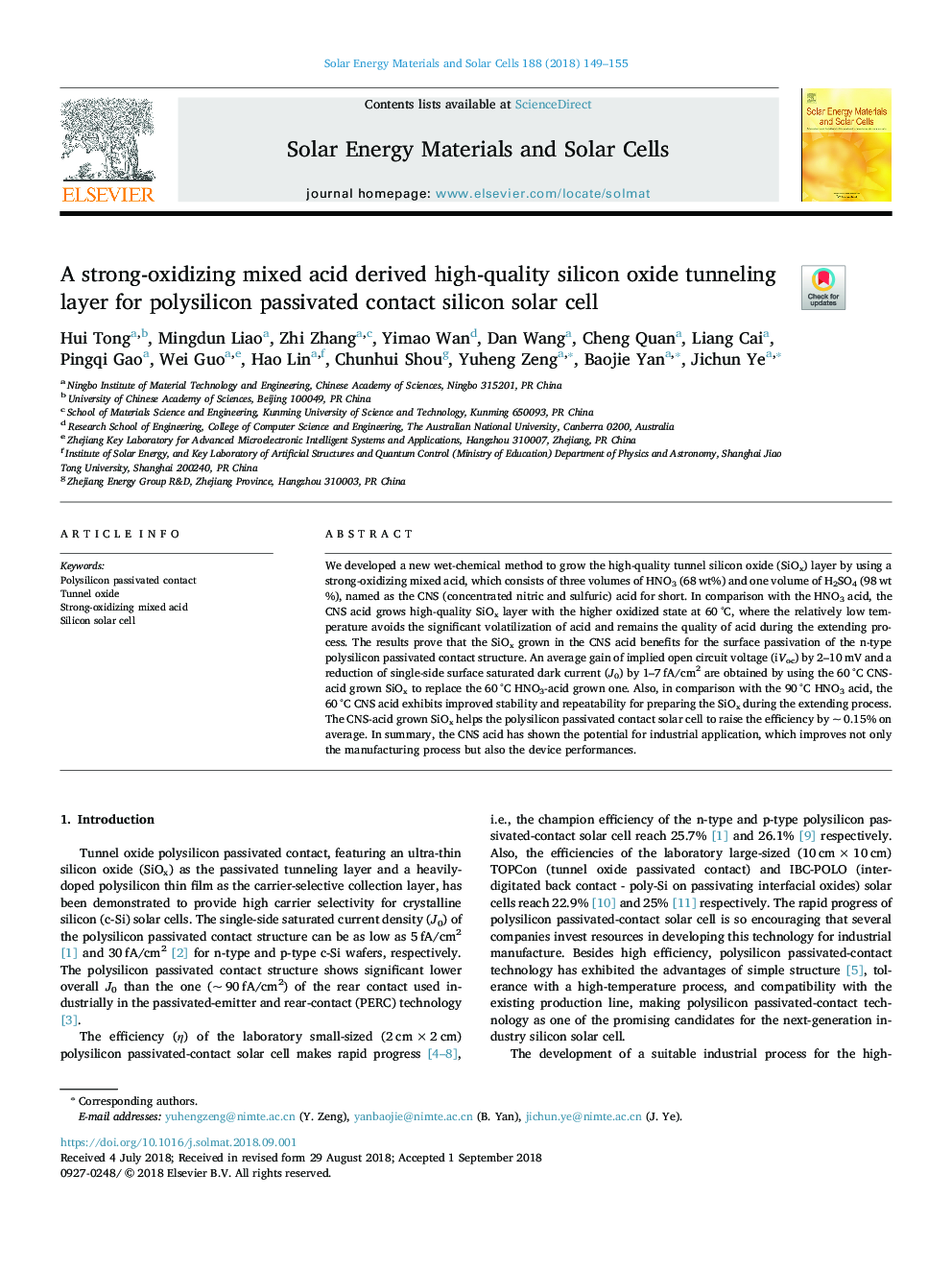| Article ID | Journal | Published Year | Pages | File Type |
|---|---|---|---|---|
| 10139002 | Solar Energy Materials and Solar Cells | 2018 | 7 Pages |
Abstract
We developed a new wet-chemical method to grow the high-quality tunnel silicon oxide (SiOx) layer by using a strong-oxidizing mixed acid, which consists of three volumes of HNO3 (68â¯wt%) and one volume of H2SO4 (98â¯wt%), named as the CNS (concentrated nitric and sulfuric) acid for short. In comparison with the HNO3 acid, the CNS acid grows high-quality SiOx layer with the higher oxidized state at 60â¯Â°C, where the relatively low temperature avoids the significant volatilization of acid and remains the quality of acid during the extending process. The results prove that the SiOx grown in the CNS acid benefits for the surface passivation of the n-type polysilicon passivated contact structure. An average gain of implied open circuit voltage (iVoc) by 2-10â¯mV and a reduction of single-side surface saturated dark current (J0) by 1-7â¯fA/cm2 are obtained by using the 60â¯Â°C CNS-acid grown SiOx to replace the 60â¯Â°C HNO3-acid grown one. Also, in comparison with the 90â¯Â°C HNO3 acid, the 60â¯Â°C CNS acid exhibits improved stability and repeatability for preparing the SiOx during the extending process. The CNS-acid grown SiOx helps the polysilicon passivated contact solar cell to raise the efficiency by ~â¯0.15% on average. In summary, the CNS acid has shown the potential for industrial application, which improves not only the manufacturing process but also the device performances.
Keywords
Related Topics
Physical Sciences and Engineering
Chemical Engineering
Catalysis
Authors
Hui Tong, Mingdun Liao, Zhi Zhang, Yimao Wan, Dan Wang, Cheng Quan, Liang Cai, Pingqi Gao, Wei Guo, Hao Lin, Chunhui Shou, Yuheng Zeng, Baojie Yan, Jichun Ye,
